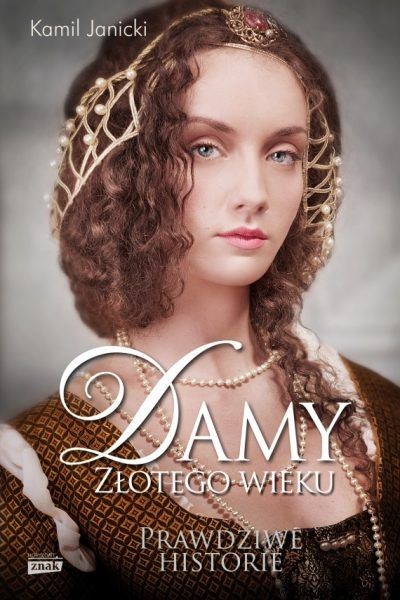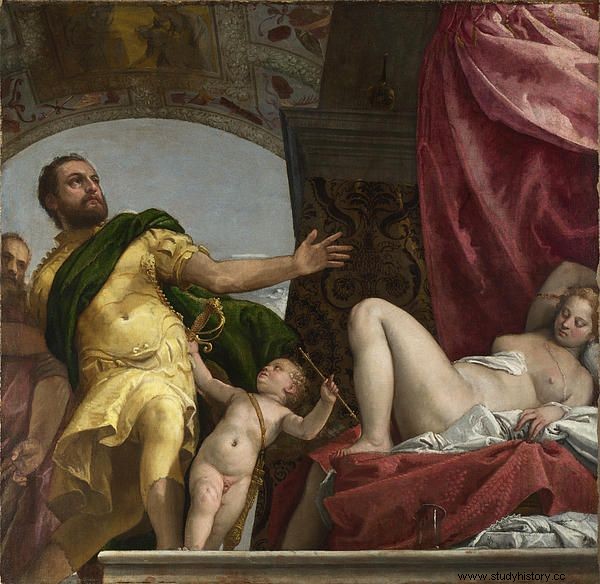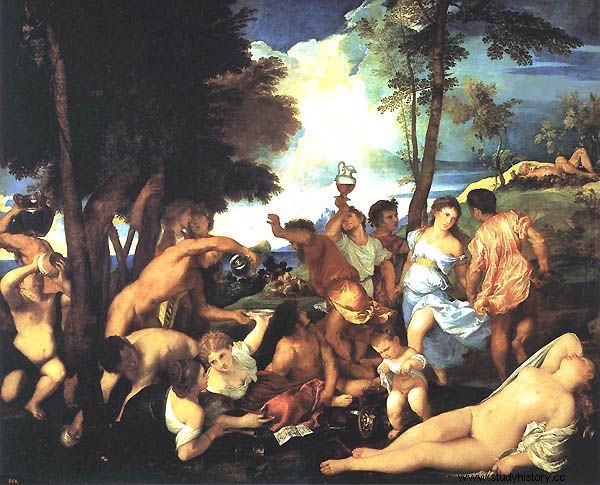The Renaissance did not turn red. After the stiff Middle Ages where everyone did their thing but nobody admitted it, people needed a change. Suddenly, instead of the last rorats, the courtiers began to discuss their own promiscuous fantasies and their favorite prostitutes. And the noble kings echoed them eagerly.
In the 16th century, sex was everywhere. Take, for example, the family chronicles of the German nobility. Seemingly - it's hard to find boring and more pompous texts. And yet, the author of the mid-century "Chronicle of the von Zimmern" graphs ... clearly lacked sex. He transformed the story about the marriage of the Polish king Sigismund the Old and the Italian princess Bona Sforza, concluded some 40 years earlier, into - without trying on - modern porn without batting an eye.
The king wishes to copulate
In his version of the story, wild Bona spent the entire journey from Italy to Poland in bed (or rather - in a carriage) with a random nobleman. Meanwhile, the king was withering with longing, the swollen sign of impatience clinging to his pants with difficulty. It was enough for the beautiful 24-year-old girl to reach the outskirts of Krakow for the ruler to decide that he would not be able to hold on anymore. Although he had never seen this woman with his eyes before and had never spoken to her, he was only thinking of bringing her to his lair instead of greetings.

Bored with Bona with her children and husband. How much truth was there in the stories of her promiscuity? Fragment of Jan Matejko's painting "The Suspension of the Sigismund Bell".
The herald summoned by him exclaimed:“Let everyone leave! Our king wants to copulate! ”. And this is exactly how, at once, in a tent near the city, the proud Polish monarch wanted to deflower a candidate for a wife.
The promiscuous quadrangles of Bona Sforza
This is not the only erotic story with Polish rulers (or rulers) in the main roles. Bona Sforza herself had, in the opinion of outsiders, at least as many faces as the modern Mr. Gray. Let's take a look at The Truth Uncovered About Princes, a pornographic chronicle written by two imaginative Italians, Sylvius and Ascanius Coronov. According to this modern harlequin, before she left for Poland, Bona was embroiled in a promiscuous love quadrangle.
Her lover was the Neapolitan aristocrat Hektor Pignatelli, and her mother's lover - the father of this young man. The inventive relationship was ended only by the marriage of Bona. Hektor did not want to take her to the Vistula River with her and continue the romance behind the Polish king's back. As if that were not enough, he quickly found consolation in the arms of another girl. Offended to the living Sforza, she could not close her eyes to such a slander. Burning with hatred and vengeance, she ordered her agents to poison her unfaithful lover.

Queen Bona in a square? The illustration shows the painting by Titian "Village Concert".
Italian fruit ripens faster
In the light of legends, the queen's actions did not end even with her marriage to Zygmunt. The aging king, instead of cooling Bona's temperament, only inflamed in her the need to search for new erotic sensations. It was said that the monarch's first child was born a few months ahead of schedule.
When asked about the reasons, Bona was only supposed to shamelessly sneer:"Italian fruit ripens faster!" Gossipers claimed that she spit out illegitimate children almost every year, then tossing these bastards to trusted courtiers.
As if that were not enough - at least in her husband's opinion she was hopeless in bed. Apparently, the first intimate meeting with Bona disappointed Zygmunt so much that he immediately left the bedroom, sat down in the inkwell and confided his impressions to the diary.

You can read about influential Polish women of the Renaissance in Kamil Janicki's book "Lady of the Golden Age", available at Znak.com.pl!
"Regina Bona attulit nobis tria dona:Faciem pictam, vulvam non strictam et pecuniam fictam" - ran two stanzas of the poem that allegedly begot inspiration at that moment. Translated freely into Polish, they would mean: "Queen Bona brought us three gifts:a face covered in makeup, an excessively loose vagina and made-up money." This is just an example of sexual frustration!
Calumny, fabrications and… tasteless jokes
All these stories were, of course, a fingerprint. But that doesn't mean they should only be taken as amusing anecdotes. Erotic fantasies, like nothing else, allow you to explore the mentality of the epoch. The Renaissance, meanwhile, was promiscuous both in shameful dreams and in reality. The last kings of the Jagiellonian dynasty even decorated their own mausoleum - the tombed Sigismund Chapel at Wawel - with unequivocal erotic art.
Their courtiers indulged in both lecherous and primitive entertainment. The files kept in the archives of the Vatican describe the manner in which a certain Jan Wawrzyniec Pappacoda entertained himself - one of Bona Sforza's closest associates, and at the same time a man who would establish a plot that ended with the murder of the queen.

The hidden erotic fantasies of Renaissance people are visible on the canvases of the great masters. Painting by Paolo Veronese.
Comet named Pappacoda
One evening, Pappacoda invited a group of friends and government officials to "comet-watching" at his home. When all the honorable guests arrived, it turned out that the host had neither a telescope nor even a terrace from which to watch the sky. When asked where the promised comet was, Pappacoda smiled, pulled off his pants and proudly stated:"here!" . And all of this happened in a time of progress, Leonardo da Vinci or Nicola Machiavelli.
No wonder that in a country where such things were done among the most important politicians, the entire wedding of Bona and Sigismund the Old (this is real, and not obscured by von Zimmern's counts) turned into a great bachelor party. And it went down in history as the event that hosted probably the biggest competition of ... erotic stories in this era.
Poets from almost all European countries competed in peppery stories that were supposed to cheer up newlyweds before their wedding night. A certain Kasper Ursinus explained in his poem that the idea of a wedding between Sigismund and Bona did not appear for the first time at a Viennese court, but in the bedroom of the Roman goddess Venus.

The wedding of Bona and Zygmunt, at least in the verbal sphere, turned into real bacchanalia! The illustration shows a painting by Titian.
One night, Mars crept into the house of the lady of beauty and love to devote himself to the "idyll of love" in the absence of her husband, Venus Vulcan. And it was during the passionate intercourse - as the Renaissance poet explains - the lord of war gasped into the ear of the beautiful goddess that it would be worth finding a new wife for the Polish king.
Feeling the moment of ecstasy approaching, Venera was ready to agree to anything. If only Mars would stop talking and focus his attention on the vigorous movement of his hips. In this way, Zygmunt not only got a new wife, but also the most beautiful girl in Italy.
A slender, young blonde fell into the arms of a poddy, unappetizing fifty-year-old with an accountant's appearance and a potato nose. You can guess that if someone was quietly complaining about their erotic life, it was Bona rather than Zygmunt.
Source:
You can learn more about the confusing history of the Jagiellonian dynasty in Kamil Janicki's book. "Ladies of the Golden Age" (Znak Horyzont 2014). The article is based on the literature and materials collected by the author during the work on the book. As a reader of Historical Curiosities, you can buy it at a 30% discount!
